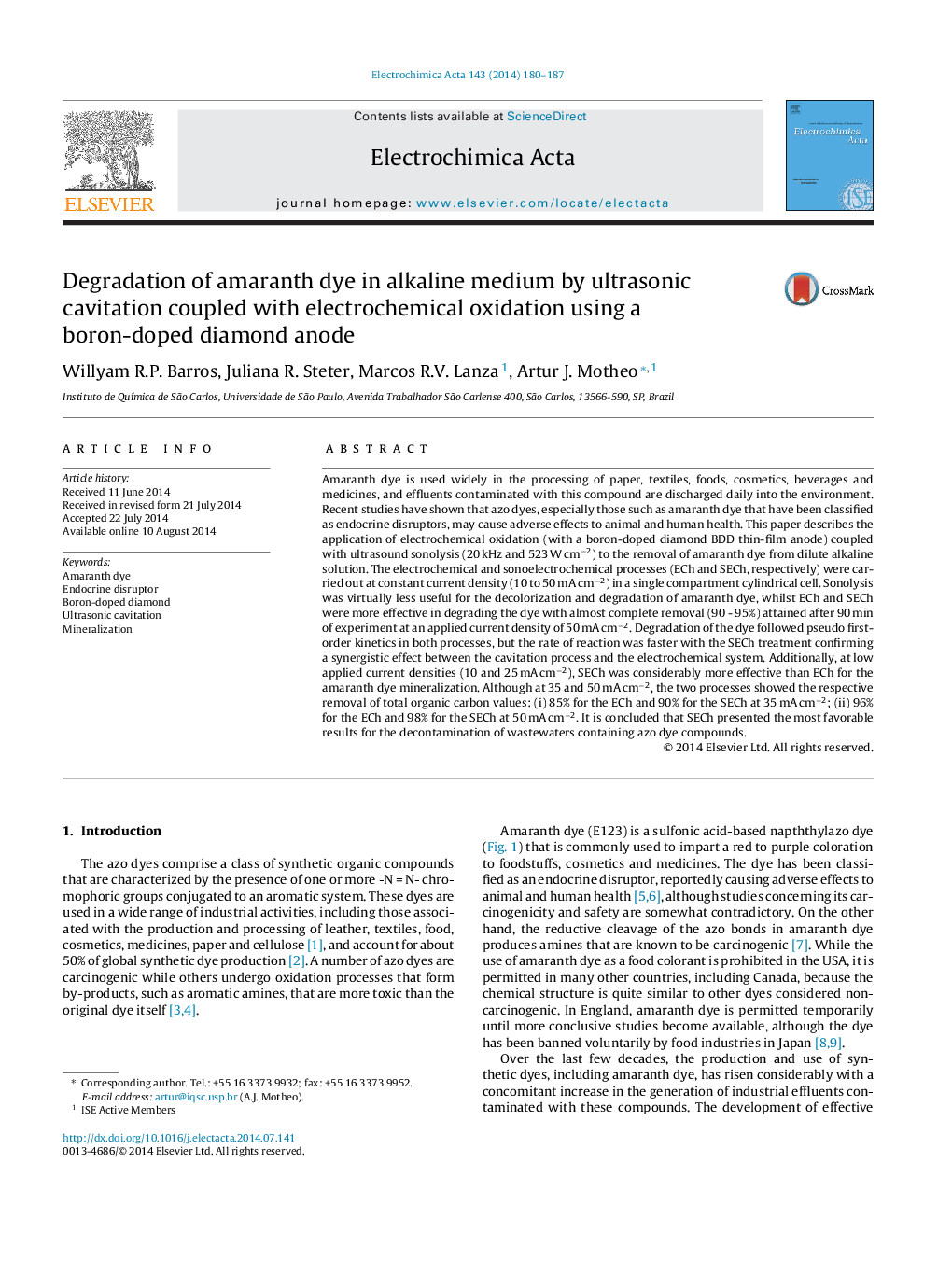| کد مقاله | کد نشریه | سال انتشار | مقاله انگلیسی | نسخه تمام متن |
|---|---|---|---|---|
| 185152 | 459591 | 2014 | 8 صفحه PDF | دانلود رایگان |

Amaranth dye is used widely in the processing of paper, textiles, foods, cosmetics, beverages and medicines, and effluents contaminated with this compound are discharged daily into the environment. Recent studies have shown that azo dyes, especially those such as amaranth dye that have been classified as endocrine disruptors, may cause adverse effects to animal and human health. This paper describes the application of electrochemical oxidation (with a boron-doped diamond BDD thin-film anode) coupled with ultrasound sonolysis (20 kHz and 523 W cm−2) to the removal of amaranth dye from dilute alkaline solution. The electrochemical and sonoelectrochemical processes (ECh and SECh, respectively) were carried out at constant current density (10 to 50 mA cm−2) in a single compartment cylindrical cell. Sonolysis was virtually less useful for the decolorization and degradation of amaranth dye, whilst ECh and SECh were more effective in degrading the dye with almost complete removal (90 - 95%) attained after 90 min of experiment at an applied current density of 50 mA cm−2. Degradation of the dye followed pseudo first-order kinetics in both processes, but the rate of reaction was faster with the SECh treatment confirming a synergistic effect between the cavitation process and the electrochemical system. Additionally, at low applied current densities (10 and 25 mA cm−2), SECh was considerably more effective than ECh for the amaranth dye mineralization. Although at 35 and 50 mA cm−2, the two processes showed the respective removal of total organic carbon values: (i) 85% for the ECh and 90% for the SECh at 35 mA cm−2; (ii) 96% for the ECh and 98% for the SECh at 50 mA cm−2. It is concluded that SECh presented the most favorable results for the decontamination of wastewaters containing azo dye compounds.
Journal: Electrochimica Acta - Volume 143, 10 October 2014, Pages 180–187